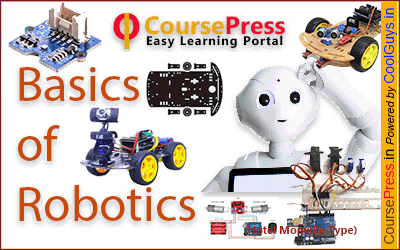The first use of the word “Robot” was made in R.U.R (Rossum’s Universal Robots), written by Czech playwright Karl Capek in 1921, who got this name from the Czech word for slave. The word “Robot” occurred in a play about mechanical men that are built to work at the place of a human being.
Further, in 1942, Russian – born American science – fiction writer Isaac Asimov used the word “Robots” in his short story “Runabout”. In this story, he presented a much optimistic idea about the role of the robot in human society and characterized the robots as helpful servants of a human being with the proposed three “Law of Robotics”.
First Law: A robot may not injure a human being or, through inaction, allow a human being to come to harm.
Second Law: A Robot must obey the orders given it by human beings except where such orders would conflict with the First Law.
Third Law: A Robot must protect its own existence as long as such protection does not conflict with the First and Second Law.
In a general way, the concept of many is that Robot is some sort of machine that can move around and made for the specific tasks to help the human being to make their tasks easy. But in fact, Robotics is much more than to complete tasks given by man, either help humans in their life or mean the end of humanity.
There are so many definitions of the robot, being no top parameter, the definitions are gradually changing as the improvements are taking place in Robotics Technology. Few definitions are:
The robot is an electromechanical device that is capable of reaching in some way to its environment and take autonomous decisions in order to achieve defined tasks.
As per the above definition, a device may be a simple toaster or adding task against action it may be a car but they have no way of perceiving their environment would not be considered as Robots.
On the other hand, a vacuum cleaner (navigate around a room) or a solar panel that seeks sunlight, can be considered as Robotic Systems.
Considering more features of Robots, let’s assume a war robot, which is remotely controlled, would not fall under the above definitions. But such Robots are much closer to a complex remote-controlled car.
Modern Definition of Robots
All the above definitions are quite general. Definitions are changing as the robotics is rapidly growing. Maja J. Matarić is an American computer scientist and roboticist, who uses the following definition in his book “The Robotics primer”:
“A robot is an autonomous system which exists in the physical world, can sense its environment, and act on it to achieve some goals.
Analyzing the above definition a vast scenario of Robotics came into the picture
- The robot is an autonomous system
- Robot exist in the physical world
- The robot can sense its environment
- Achieve some goals
The above resulted in the following
The robot is an autonomous system that means it can work automatically. Up to some extent it can be knitted with computer programming after that it may update itself.
Robot exists in the physical world means it can move anywhere in the physical world just like a human being.
The robot can sense the environment like a human being means any device which cannot sense the environment cannot be a Robot.
Robot achieves some goals like a human being.
The above analysis clearly shows that something like a human being works autonomously, exists in the physical world, and does specific tasks. This definition left human beings at the door of advance endless research.



